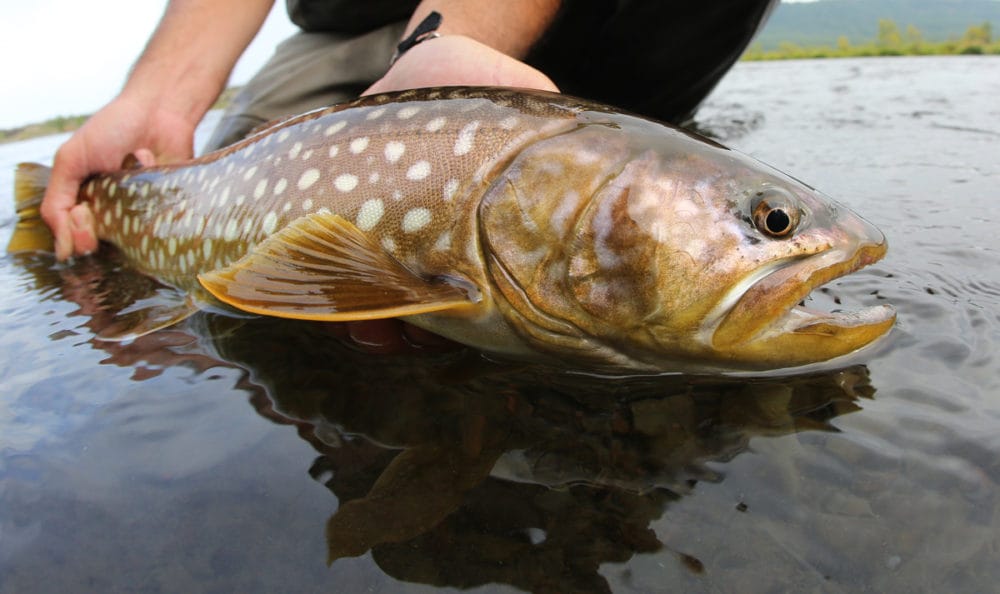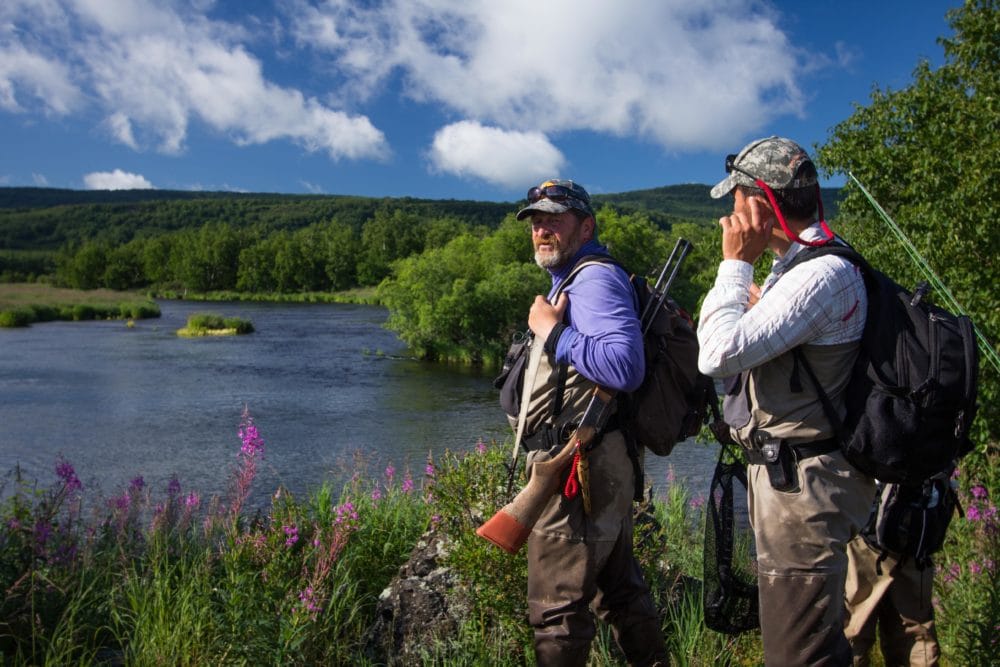Kamchatka Wilderness Float 2021
Russia’s eastern peninsula, Kamchatka, is the apex of modern trout dry fly fishing; an adventure of the purest kind, across vast wilderness and rivers that teem with wild trout.
The landmass of Kamchatka stabs south from mainland Siberia, slicing into the Bering Sea just west of Alaska. Its jagged coastlines are lapped by fish-rich waters, its snow-capped horizons are dotted by strato-volcanoes, and its valleys are carved deep by over 12,000 pristine spring creeks and rivers. Virtually none of the peninsula has been impacted by man. It’s a trout, salmon and char Utopia. This coast-to-coast, trackless wilderness is inaccessible to all modes of transportation except horse, jet-boat and iconic orange and blue MI-8 helicopters.
Alaska angling veterans will find a level of familiarity in Kamchatka’s rivers, landscapes and climate. Most of the same plants and animals inhabit the two regions, the weather is similar; and all life on the peninsula depends on annual runs of salmon for essential energy. All of these trips are rustic and wild and not for everyone. They require a reasonable degree of physical fitness and mental stamina. The payoff is the simple guarantee that they will set hearts pounding with trout fishing like you have never seen, in a setting that few people have ever seen.
Kamchatka Wilderness Float
The Northern Wilderness Floats in Kamchatka are easily the least-fished rivers in the world. There are a series of six different streams in this region, each one fished only once, at most twice a year. This ensures that every fish in the river has almost never seen an artificial fly, let alone been hooked. It is the wildest fly fishing experience on the planet. The river systems culminate in the massive Tigil River, and feature a handful of tributaries, both large and small, including the now-famous Sedanka Spring Creek, Turuscheva, Perevalovaya, and several different forks of the Pirozhnikova.
It is one of the most biologically diverse drainages on the peninsula, with all six species of Pacific salmon (including Cherry Salmon only found in the Far East), rainbow trout, resident kundzha, and sea-run dolly varden, both of the latter being species of char. This spring creek ecosystem is particularly rich with insect, mouse, and salmon biomass that feed an exceptionally dense population of 16-27 inch native rainbow trout. As a bonus to the incredible fishing, these rivers do not “blow out” except in the absolute worst extended rain storm conditions, owing to the spring-fed origins and expansive lava rock in the drainage. These rivers are extremely stable.


